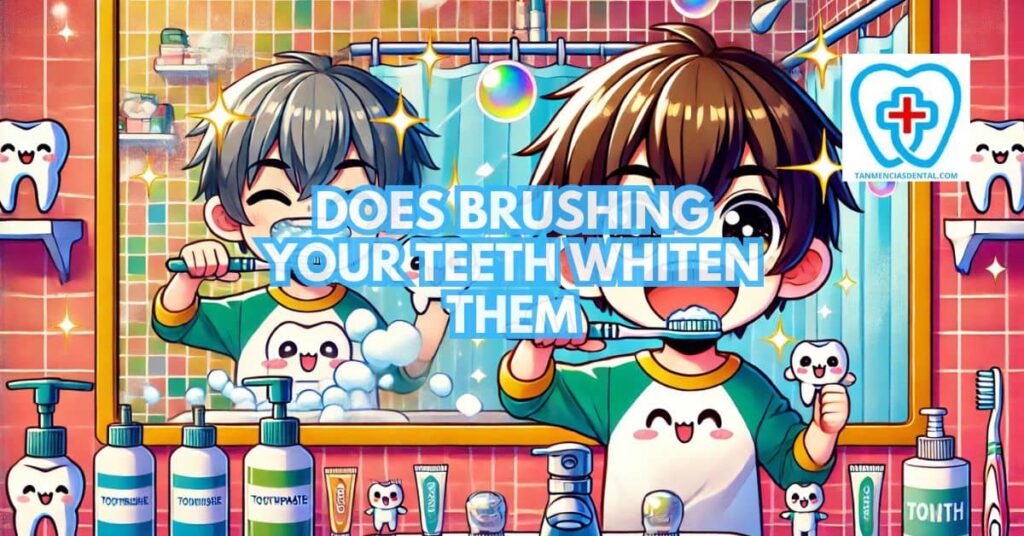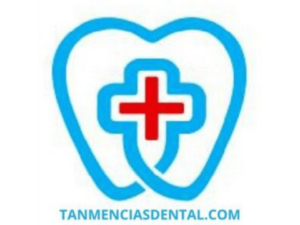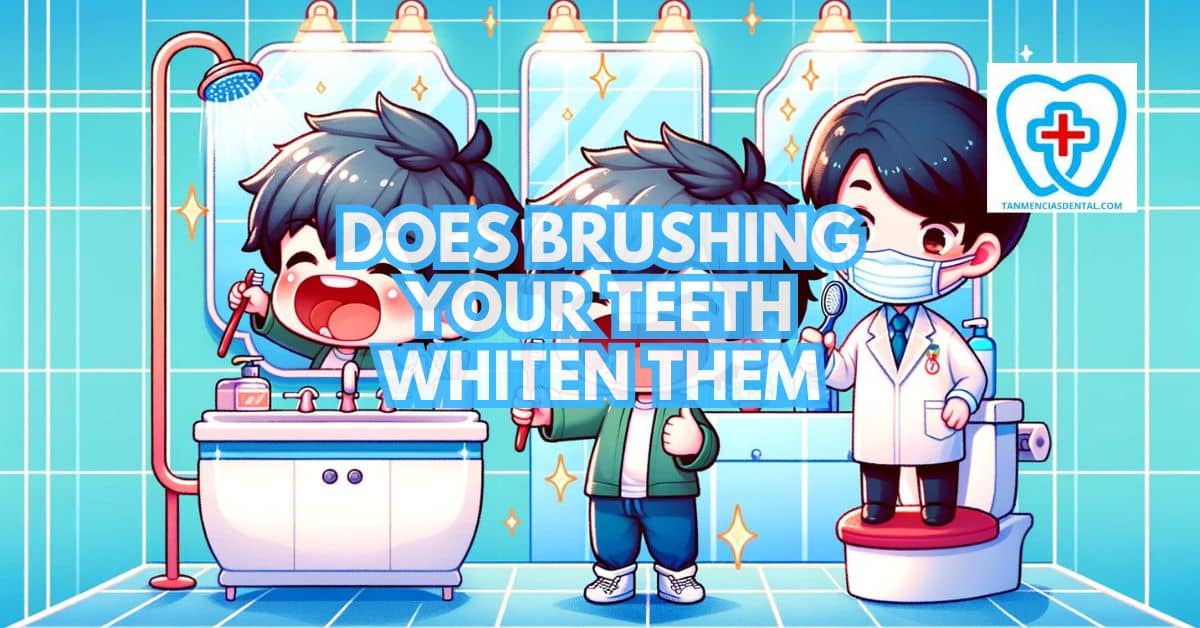Brushing your teeth is essential for keeping them clean and healthy, but does brushing your teeth whiten them?
While brushing can remove surface stains and make your teeth appear brighter, it doesn’t actually change the natural color of your teeth.
True whitening involves specific treatments that go beyond regular brushing.
Brushing helps prevent stains from building up, but it won’t provide the bleaching effect that professional whitening does.
Understanding this distinction is key to managing your expectations about daily oral hygiene.
1. Extrinsic vs. Intrinsic Stains: Knowing the Difference
Coffee, wine, tobacco, and other similar substances frequently cause extrinsic stains, which are those that appear on the surface of the teeth.
These can generally be removed or reduced through regular brushing and professional dental cleanings.
Intrinsic stains, however, are located within the tooth structure and often result from medication, trauma, or certain types of decay.
Brushing alone is not effective against intrinsic stains, and they typically require professional whitening procedures to be lightened or removed.
Understanding these types can guide your expectations and choices in dental care.
🦷 Can a Dental Hygienist Work as a Dental Assistant?
2. Stain Removal vs. Whitening: What Brushing Can Really Do
Brushing regularly helps to remove extrinsic stains by physically scrubbing away the particles that accumulate on your teeth.
This action helps to prevent these particles from setting into the teeth and causing more permanent discoloration.
However, brushing does not constitute whitening, which often involves chemical processes to change the actual color of the tooth enamel.
While daily brushing is essential for maintaining oral health, it should not be confused with the effects of a whitening treatment.
For deeper, intrinsic stains, brushing has little to no effect, and professional interventions are usually necessary.
🦷 What Is A Dentist Uniform Called? Unpacking the Essentials of Dental Apparel
3. How to Brush Your Teeth Properly for Stain Removal
Using the correct brushing technique is essential for effectively removing stains without damaging your enamel.
Gently use circular motions instead of harsh scrubbing to clean all surfaces of your teeth thoroughly.
Make sure to brush for at least two minutes each time to ensure every area is covered.
Choose a soft-bristled toothbrush and replace it every three months to maintain its effectiveness.
Hold your toothbrush at a 45-degree angle to your gums and apply only light pressure to protect your tooth enamel.
🦷 Do Braces Cause Gingivitis? The Mystery Behind Orthodontic Treatment and Gum Health
4. Whitening Toothpastes: Do They Make a Difference?
Whitening toothpastes often contain abrasive components that aim to remove surface stains more effectively than regular toothpastes.
These products may include chemicals like hydrogen peroxide or baking soda, which have mild whitening effects.
However, the concentration of these chemicals in toothpaste is relatively low compared to professional treatments, so the whitening effect is minimal.
Frequent use of these pastes can help maintain a whiter appearance by preventing new stains from forming.
Yet, they should be used with caution, as excessive use can lead to enamel erosion over time.
🦷 How to Identify Broken Tooth Decay Before It Becomes a Serious Issue

5. Enamel Erosion: A Risk of Over-Brushing and Harsh Products
Frequent use of hard-bristled toothbrushes or abrasive toothpastes can wear down the enamel, the tooth’s protective outer layer.
This erosion not only makes teeth more susceptible to decay but also more likely to stain, as roughened surfaces catch and hold colors more readily.
Enamel, once lost, does not regenerate, which highlights the importance of using gentle brushing techniques.
Dentists often recommend soft-bristled brushes and non-abrasive toothpaste to protect enamel integrity.
Additionally, avoiding acidic beverages and foods that can weaken enamel is crucial for its preservation.
🦷 Why Are Dental Implants So Expensive? Understanding the Costs
6. Tooth Sensitivity and Whitening: Understanding the Connection
Increased tooth sensitivity often accompanies the use of whitening products, which can irritate exposed dental nerves.
Ingredients like peroxide commonly found in whitening treatments, can exacerbate sensitivity by penetrating the tooth’s enamel.
People who experience sensitivity should consider using toothpaste formulated for sensitive teeth, which can help mitigate discomfort.
Consulting with a dentist before starting any whitening treatment is advised to ensure it is appropriate for your dental health.
Regular checkups can also help manage sensitivity and maintain overall tooth health.
🦷 Understanding Broken Tooth Pain In Jaw: Causes and Solutions
7. Natural Whitening Myths: Separating Fact from Fiction
Many home remedies are touted as natural ways to whiten teeth, such as using fruits like strawberries or household items like apple cider vinegar.
However, these methods often lack scientific support and can sometimes damage the enamel due to their acidic nature.
Baking soda is a popular natural cleaning agent, but its abrasive properties can also erode enamel with excessive use.
It’s crucial to approach natural whitening methods with skepticism and prioritize those endorsed by dental professionals.
For safe and effective alternatives, always consult with your dentist before trying new remedies.
🦷 Can Saltwater Help With Gum Disease? Benefits and Risks You Need to Know
8. Maintaining White Teeth: The Role of Regular Brushing
Consistent brushing is key in preventing the accumulation of stains and maintaining the natural whiteness of teeth.
Brushing after consuming stain-causing foods and beverages, like coffee or red wine, can help minimize their staining effects.
Using a fluoride toothpaste can also assist in protecting the teeth from decay and erosion, which indirectly supports maintaining a whiter smile.
While brushing cannot replace professional whitening methods, it is an essential part of any oral hygiene regimen aimed at keeping teeth healthy and looking their best.
Encouraging regular dental visits and cleanings will also enhance the effectiveness of your daily oral care routine.
🦷 Foods That Cause Gingivitis: Reveal These Hidden Culprits
9. Professional Whitening: Comparing At-Home and Dental Office Options
When considering if brushing teeth whitens them, it’s important to recognize the limitations of brushing compared to professional treatments.
Professional teeth whitening at the dentist’s office involves stronger bleaching agents, which can lighten your teeth several shades in a single visit.
In contrast, at-home products like whitening strips and trays are more affordable and convenient, but they often take longer to show results.
Dental office procedures also provide added safety, as dentists use protective measures to prevent gum irritation and tooth sensitivity during the treatment.
Whitening strips, while easy to use at home, may not fit perfectly and could lead to uneven whitening or irritation if not used properly.
Whether you choose professional teeth whitening or at-home kits, following guidelines is key to avoiding overuse, which can damage enamel.
Consulting your dentist is the best way to decide which option suits your whitening goals and dental health.
🦷 Can You Brush Your Teeth With Hydrogen Peroxide? Exploring the Benefits and Risks
10. Set Realistic Expectations: What to Anticipate with Tooth Whitening
It’s important to have realistic expectations when pursuing tooth-whitening treatments.
Not all types of discoloration are amenable to chemical whitening; for instance, stains brought on by medications or dental trauma might not.
Genetic factors and the natural color of your enamel also play a significant role in the outcome of any whitening procedure.
Discussing your specific situation with a dentist can help set achievable goals and prevent disappointment.
Understanding the limitations and possibilities can lead to a more satisfying whitening experience.
🦷 What’s the Difference Between Dental Floss and Dental Tape?
11. Brushing and Whitening: Balancing Between Cleanliness and Aesthetics
While the desire for whiter teeth can motivate better oral hygiene habits, it is important to balance aesthetic goals with health considerations.
Overemphasis on whitening can lead to choices that might compromise tooth integrity, such as using overly abrasive products or excessive bleaching.
Maintaining regular brushing with a focus on thoroughness, not just stain removal, supports overall dental health and contributes to a brighter smile.
It’s essential to choose products that are effective yet gentle to ensure both cleanliness and dental health.
Regular dental checkups help maintain this balance, ensuring that your pursuit of whiter teeth does not harm your oral health.
🦷 How To Clean Teeth After Braces Removal: Tips for Maintaining Your Best Smile
👨⚕️ Conclusion
Understanding the role of brushing in maintaining and enhancing tooth whiteness is crucial for effective oral care.
While regular brushing is pivotal for dental health and can help prevent surface stains, it should be part of a broader strategy that includes professional dental advice and possibly whitening treatments.
By integrating safe practices, realistic expectations, and regular professional care, you can achieve a healthier and brighter smile.
Remember, the best approach to tooth whitening balances aesthetics with the fundamental principles of dental health.
Embracing this comprehensive view will not only improve your appearance but also support your overall dental well-being.
😊 Self-Promotion
Visit us at Tan-Mencias Dental Clinic, your local partner in achieving a healthier, brighter smile right here in Parang, Marikina City!
Whether you have questions or need to schedule an appointment, you can easily reach out by calling us at 9171451074, messaging through our Facebook page, or via our website’s contact page.
Our friendly team is dedicated to providing you with the best dental care in a comfortable and welcoming environment.
We’re here to help you with all your dental needs, from routine checkups to professional whitening treatments.
Let us be a part of your journey to a radiant smile; contact Tan-Mencias Dental Clinic today!

